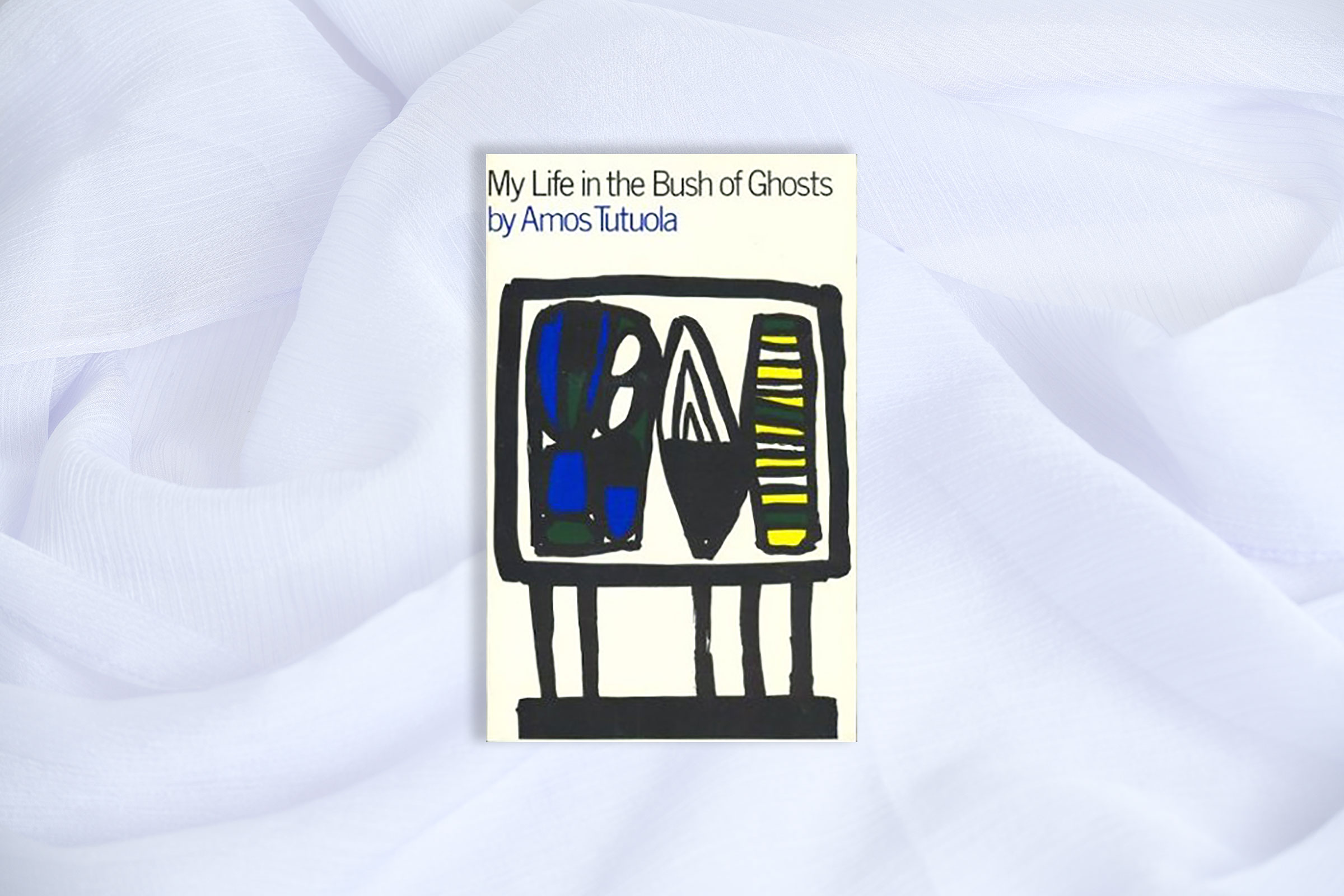In 1954, the Nigerian writer Amos Tutuola published My Life in the Bush of Ghosts, uniquely synthesizing the Yoruba culture he was born into with that of the British and Christian colonialism under which he matured into adulthood. The book, Tutuola’s second, tells the story of a west African child who is forced for 24 years to navigate an incomprehensible wilderness filled with fantastical beings, most of whom are, as the title suggests, some form of ghost. It’s a striking work of syncretism, recontextualizing previously unrecorded west African mythology by imbuing it with symbols of what was at the time a new global modernity. Consider, for example, one of the key figures of the novel: the “television-handed ghostess,” who convinces the narrator to follow the sorcerers’ advice and lick his open wound—by opening her hands and revealing TV screens on her palms showing footage of the narrator’s family and home village. Tutuola would go on to inspire Talking Heads frontman David Byrne and superproducer Brian Eno to record a 1981 album by the same title as this book; it’s a testament to his impact, as arguably the first international artist to form a new language by sampling the folk traditions of the global south and the modern imagery of the industrialized West. —Elijah Wolfson
Buy Now: My Life in the Bush of Ghosts on Bookshop | Amazon
- The 100 Most Influential People of 2024
- The Revolution of Yulia Navalnaya
- 6 Compliments That Land Every Time
- What's the Deal With the Bitcoin Halving?
- If You're Dating Right Now, You're Brave: Column
- The AI That Could Heal a Divided Internet
- Fallout Is a Brilliant Model for the Future of Video Game Adaptations
- Want Weekly Recs on What to Watch, Read, and More? Sign Up for Worth Your Time
